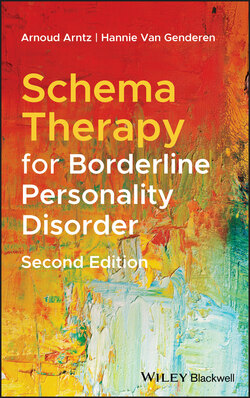Читать книгу Schema Therapy for Borderline Personality Disorder - Hannie van Genderen - Страница 23
The abandoned/abused child
ОглавлениеThe abandoned/abused child is often referred to as “Little …” (= the name of the patient). In our examples, we refer to the patient as Nora. Therefore, when in this mode she becomes “Little Nora.”
Little Nora is sad, desperate, inconsolable and often in complete panic (See ST step by step 5.01). When in this mode the patient's voice itself often changes to that of a child. Her thoughts and behavior become that of a four‐ to six‐year‐old. She feels alone in the world and is convinced that no one cares about her. The basic belief in this mode is that she can trust no one. Everyone will reject, abuse, or eventually abandon her. The world is a threatening, dangerous place that holds no future for her.
Little Nora thinks in terms of black and white. She demands constant and immediate reassurance and solutions to her problems. She is incapable of helping herself. There is a great chance that during the first phase of the therapy, the therapist will face Little Nora mainly in situations of crisis. In the early stage of the therapeutic process, it is unlikely the patient will show her abandoned child side at other moments (for a sample dialogue, see Chapter 9, “Treatment Methods for the Abandoned and Abused Child”).
When the patient is in this mode, she latches onto the therapist in the hope that he holds the solutions to all of her problems. She expects complete and constant comfort and compassion from him. During this mode the therapist often feels overwhelmed by the patient's expectations of him. In an attempt to address her cries for help, he can have the tendency to look for practical solutions far too quickly. On the other hand, he may also attempt to rid himself of the patient by referring her to a crisis center too quickly. When Nora is in a panic, all practical solutions appear unfeasible. Little Nora cannot comprehend that the crisis will ever come to an end.
Nora's feelings of desperation and the therapist's feelings of incompetence will only become greater if the therapist continues to advise practical solutions. Should she be referred on too quickly, Little Nora becomes even more desperate as she feels misunderstood, abandoned, and rejected.
The therapist must allow Little Nora's presence in these sessions. He must be supportive of her, validate her feelings, offer a safe haven, encourage her to bond with him as a therapist, and address her past abuse. In short, he must offer her what she was most likely denied during her childhood.
